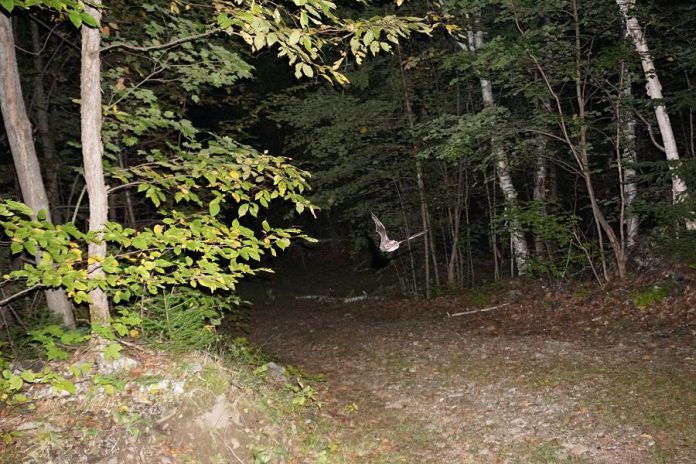
With Halloween coming up, we thought it’d be a good time to talk about bats.
Bats are often portrayed in popular culture as servants of darkness, the evil pals of Dracula, and as dangerous pests. Humans seem to have created many reasons to both hate and fear our furry flying cousins.
Bats are mysterious. They occupy a dark, aerial world that’s hidden to most of us. That mystery, however, is not nearly as fascinating and wonderful as the truth about bats. Bats lead very interesting lives.
Here are some neat facts about bats:
- Bats are more closely related to dogs and cats than to mice and rats. Woof!
- As blind as a bat? No! Bats can see both with their eyes and with their ears. Bats have eyesight that is thought to be better than humans, especially in the dark. They also use echolocation (sonar) to see structure. This helps them forage for tiny insects in the night sky.
- Bats are the only freely flying mammal, and bat wings are made from elongated finger bones just like our fingers.
- There are over 1,300 species of bat in the world, making them one of the most diverse groups of mammals.
- Ontario has eight different species of bats. Three of these species migrate south from Ontario: red bats, hoary bats, and silver-haired bats. Some migrate as far south as Central America! Five bat species hibernate in Ontario during the winter: little brown bats, eastern small-footed bats, big brown bats, northern long-eared bats, and tri-coloured bats.
- Hibernating bats can spend the entire winter without eating and can cool down their bodies to match surrounding temperatures, slowing their metabolism.
- The bats that can be found in Ontario live on average for five years. However, some individuals have been documented living upwards of 30 to 40 years.
- A mother bat typically only has one baby bat per year. Baby bats are called pups. When born, pups weigh one quarter of their mother’s weight. Pups are able to fly and hunt for insects by one month of age. Mothers will also raise pups together in a nursery — it takes a community to raise a bat.
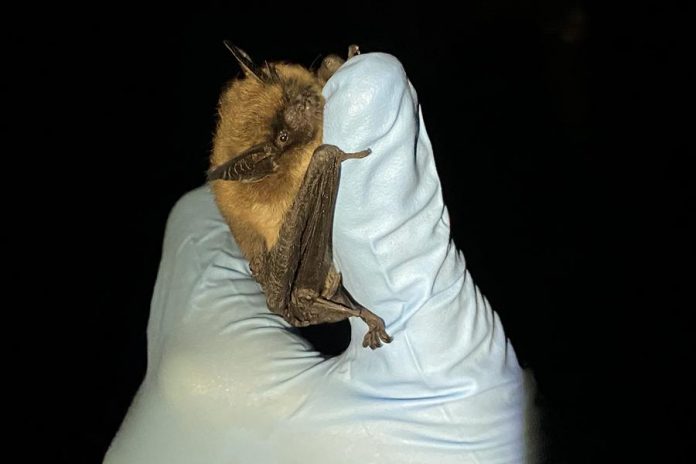
Beyond these amazing facts, bats are also important to our shared environment. Bats save farmers upwards of three billion dollars a year in pest control due to their consumption of adult moths and beetles. The larva of these insects are major agricultural pests.
These days, however, many of the bats that call our forests and cities home are in trouble. Due to an introduced fungal pathogen known as white-nose syndrome, hibernating bats in North America have faced population declines. Some locations in Canada have lost over 95 per cent of individuals.
This dramatic reduction in population, combined with ongoing threats like habitat loss and climate change, means it is even more important for us to protect bats.
Here are some concrete ways we can make bats’ lives easier and help them in their time of need:
Create foraging habitat
Enjoy gardening? Let your flowers do the work. Planting a biodiverse garden of night-blooming plants can attract nocturnal pollinators that also serve as a food source for bats.
Some plant suggestions include: evening primrose, four-o’clock, goldenrod, phlox, fleabane, and cardinal flower.
Avoid using pesticides or herbicides. These can reduce insect populations, removing much-needed food sources for bats. Pesticides and herbicides can also become toxic for wildlife that eat insects, including bats.
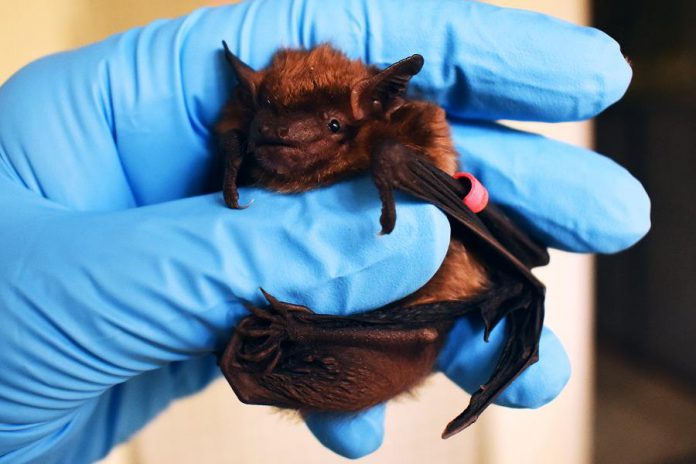
Create roosting habitat
Many bats roost in tree hollows or under tree bark. Where safe, leave dead trees as natural roosting habitat for bats.
Bat houses are a great addition to the home and cottage. A bat house can provide safe space for a nursery roost while also helping to cut down on pest insects. The GreenUP Store has several in stock from the Hope Mill, and the Avant-Garden Shop sells bat boxes and build-your-own kits.
You can also check out The Bat House Builder’s Handbook for details on how to build your own.
Found a bat in your home?
Bats use echolocation, so they can find their own way out if you open windows/doors, remove screening, and turn off the lights.
If you find a bat that seems wounded, isn’t flying, or is behaving unusually, do not touch it. Call the Rabies Information Line at the Ontario Ministry of Natural Resources and Forestry at 1-888-574-6656.
Bats, along with raccoons and skunks, can carry rabies. Only one per cent of bats carry rabies, but due to the high fatality risk of this disease, close contact should be taken seriously. If you do come into contact with a bat, contact your family doctor, local emergency room, or local public health facility immediately.
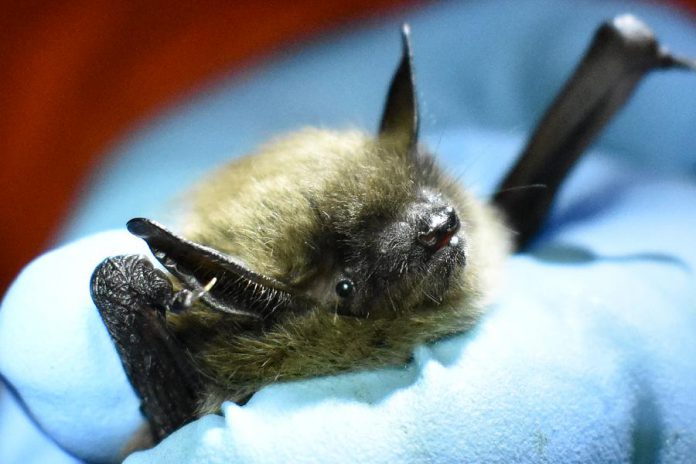
Seeing bats during the day?
If you see bats crawling around on the ground or hanging out on exposed walls or trees during the day, email info.mnrfscience@ontario.ca.
Provide this information: location, date/time, observations of the bat (what was it doing?), and if you saw a band on its arm/wing.
Found a dead bat?
Contact the Canadian Wildlife Health Cooperative at on-nu@cwhc-rcsf.ca or 1-866-673-4781.
What to do if you have an unwanted bat roost?
If bats have taken up unwanted residence in your home, contact a professional who can humanely exclude bats. It is important that bats are excluded safely, and at an appropriate time of year, avoiding maternity season when mothers and pups could be harmed. It’s also important that new habitat is provided if possible, like a bat house.
Half of Ontario’s bats are provincially endangered and we must protect them. Endangered or threatened species cannot be harassed, captured, or killed without authorization from the Ontario Ministry of Resources and Forestry. It is important to contact a professional who has this authorization.
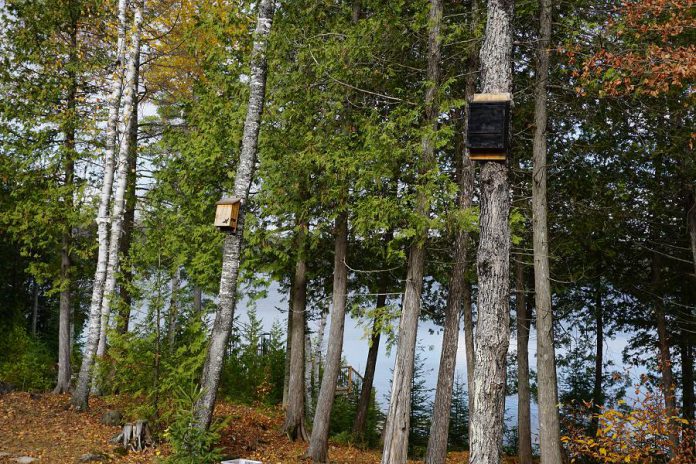
As the days get shorter, and Halloween rolls around, let’s celebrate how fascinating bats are in fact, not only in fantastic portrayals. Bats are a critical part of our local ecosystem, and they’re pretty cute too!
Take some time to learn more with the resources listed here:
- Toronto Zoo’s Native Bat Conservation Program – torontozoo.com/bats
- Bat Conservation International – batcon.org
- Bat World Sanctuary – batworld.org
- Merlin Tuttle’s Bat Conservation – merlintuttle.org
Happy Halloween!



























